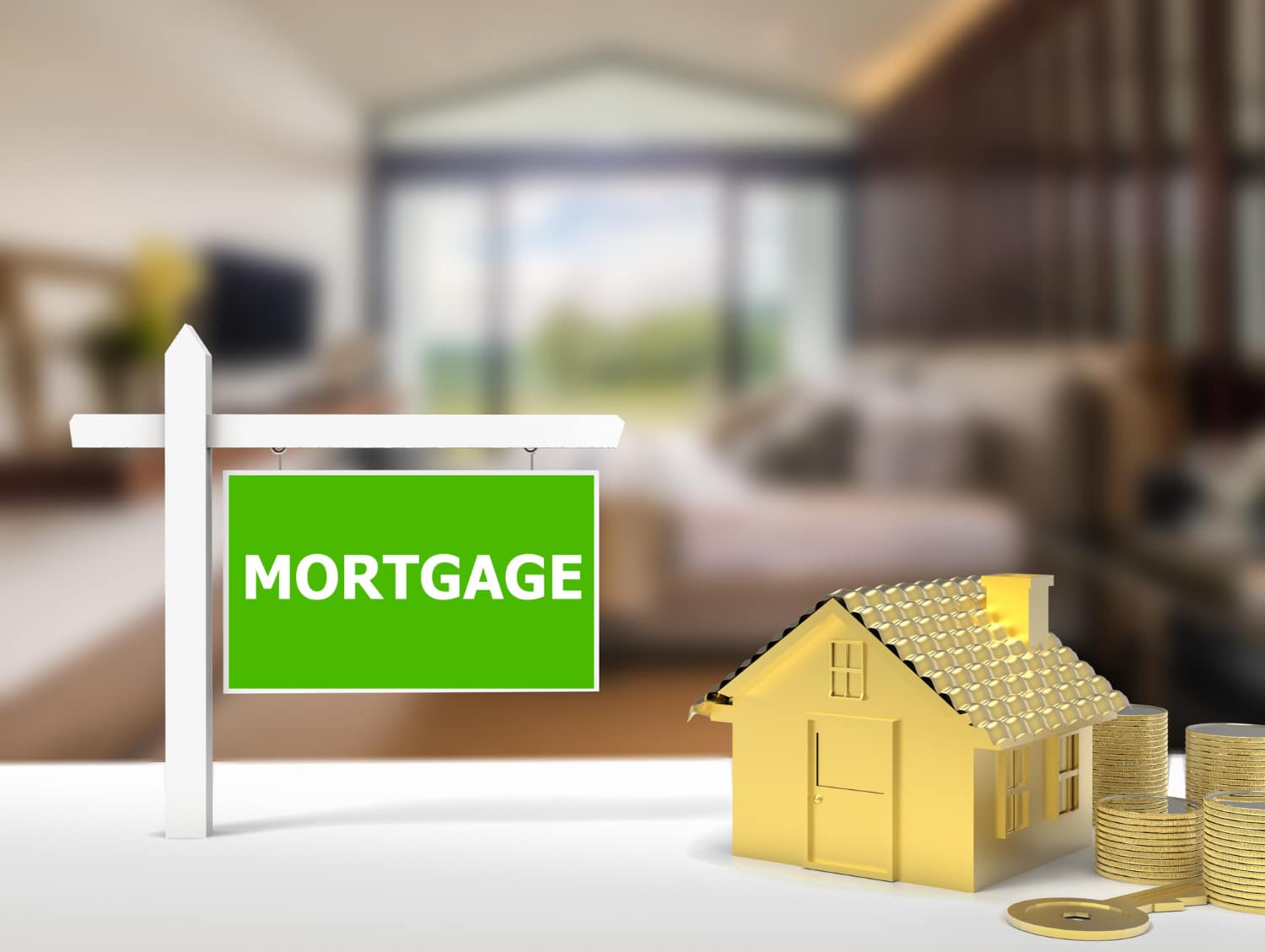Fixed-Rate Mortgage: Everything you need to know

Anúncios
A fixed-rate mortgage is one of the most popular home loan options in the U.S., offering predictable payments and financial stability.
Whether you are a first-time homebuyer or looking to refinance, understanding how this mortgage works is crucial for making an informed decision.
In this guide, we will explain what a fixed-rate mortgage is, how it works, its pros and cons, and how it compares to adjustable-rate mortgages.
Anúncios
We will also discuss the different types of fixed-rate mortgages available and the requirements to qualify for one.
Keep reading to learn everything you need to know before choosing the best mortgage for your needs.
What is a Fixed-Rate Mortgage?
A fixed-rate mortgage is a home loan with an interest rate that remains constant throughout the life of the loan.
Anúncios
This means that your monthly principal and interest payments will stay the same, regardless of market fluctuations.
This type of mortgage is ideal for borrowers who prefer financial predictability, as it eliminates the risk of rising interest rates affecting their monthly payments.
Fixed-rate mortgages are commonly available in 15- and 30-year terms, although other options may be available.
How do Fixed-Rate Mortgages work?
When you take out a fixed-rate mortgage, your lender determines your interest rate based on factors such as your credit score, loan term, and market conditions at the time of borrowing. This rate is locked in for the entire loan period.
Your monthly mortgage payment is divided into two main components:
- Principal: The borrowed amount that needs to be repaid.
- Interest: The cost of borrowing money, calculated based on your loan balance and the fixed interest rate.
In the early years of your mortgage, a larger portion of your payment goes toward interest, while a smaller amount is applied to the principal.
Over time, as you repay the loan, more of your payment will go toward reducing the principal balance.
Due to its fixed nature, this type of mortgage offers stability and is generally preferred by homeowners who plan to stay in their homes for the long term.

Fixed-Rate Mortgages vs. Adjustable-Rate Mortgages
When choosing a mortgage, one of the biggest decisions is whether to opt for a fixed-rate mortgage or an adjustable-rate mortgage (ARM).
| Feature | Fixed-Rate Mortgage | Adjustable-Rate Mortgage (ARM) |
| Interest Rate Stability | Remains the same for the entire loan term. | Changes periodically based on market conditions. |
| Monthly Payment | Predictable and stable. | May increase or decrease over time. |
| Initial Rate | Typically, higher than an ARM’s introductory rate. | Usually starts lower than a fixed rate but can increase later. |
| Best for | Borrowers who want consistency and plan to stay long-term. | Borrowers who plan to move or refinance before the rate adjusts. |
While ARMs may offer lower initial rates, they come with uncertainty, as the rate can increase after the initial period.
Fixed-rate mortgages, on the other hand, provide long-term stability, making them a safer choice for many homeowners.
Requirements to get a Fixed-Rate Mortgage
To qualify for a fixed-rate mortgage, lenders evaluate various financial and credit factors. Here are the key requirements that may impact your approval:
1. Credit Score
Lenders typically require a credit score of at least 620 to approve a conventional fixed-rate mortgage.
The higher your score, the better your chances of securing favorable terms and lower interest rates.
A credit score above 700+ can help you save thousands of dollars over the life of the loan, making your mortgage more affordable in the long run.
2. Debt-to-Income Ratio (DTI)
The debt-to-income ratio (DTI) measures the percentage of your gross monthly income that goes toward debt payments.
Most lenders prefer a DTI below 43%, as this indicates that you have enough financial margin to take on a new loan without jeopardizing your financial stability.
However, some lenders may approve a higher DTI if you have a strong credit history and stable income.
3. Down Payment
While some mortgage programs allow down payments as low as 3%, most lenders recommend a 20% down payment on the home’s purchase price.
A larger down payment not only reduces the total loan amount but can also help you avoid Private Mortgage Insurance (PMI), an additional cost charged by lenders to protect against default.
Additionally, a higher down payment can result in more favorable interest rates.
4. Employment and Income Stability
Lenders look for a stable employment history and consistent income to ensure you can afford mortgage payments over time.
A minimum of two years in the same company or industry is typically required.
Additionally, proof of income—such as pay stubs, tax returns, and bank statements—may be requested to demonstrate your ability to repay the loan.
5. Loan Amount and Property Type
The mortgage amount and property type you intend to finance also impact your eligibility.
Conventional mortgages follow Fannie Mae and Freddie Mac guidelines, ensuring more affordable terms.
However, if your loan amount is too high, it may be classified as a jumbo loan, which often has stricter requirements, including higher interest rates, a higher credit score, and a larger down payment.

Pros and cons of Fixed-Rate Mortgages
Before committing to a fixed-rate mortgage, it’s essential to weigh its benefits and drawbacks.
Pros of Fixed-Rate Mortgages
- Predictable monthly payments – Your principal and interest payments remain the same, making budgeting easier.
- Protection against rate increases – You won’t be affected by rising interest rates, unlike an ARM.
- Long-term financial stability – Ideal for homeowners planning to stay in their homes for many years.
- Easier to understand – No complex rate adjustments or future payment uncertainties.
Cons of Fixed-Rate Mortgages
- Higher initial interest rate – Compared to ARMs, fixed-rate mortgages generally have higher starting rates.
- Less flexibility – If interest rates drop, you must refinance to take advantage of lower rates.
- Higher total interest costs – A 30-year fixed-rate mortgage may result in paying more interest over time compared to shorter loan terms.
Types of Fixed-Rate Mortgages
Fixed-rate mortgages come in different loan term lengths, with 30-year and 15-year loans being the most common. Each option has its own benefits and drawbacks.
30-Year Fixed-Rate Mortgage
A 30-year fixed-rate mortgage is the most popular home loan option in the U.S. because it offers lower monthly payments.
- Lower monthly payments: Since the loan is spread over 30 years, payments are more affordable.
- Higher overall interest costs: You pay more in interest over time compared to shorter loan terms.
- Ideal for first-time homebuyers: This option allows buyers to afford more expensive homes with manageable payments.
15-Year Fixed-Rate Mortgage
A 15-year fixed-rate mortgage has a shorter repayment period, meaning higher monthly payments but significant interest savings.
- Lower interest rates: Lenders typically offer lower rates for shorter loan terms.
- Faster loan payoff: You build home equity faster.
- Higher monthly payments: Since the loan term is shorter, the monthly payments are significantly higher.
While 15-year mortgages save money in the long run, they may not be feasible for all borrowers due to higher payments.
A fixed-rate mortgage is an excellent choice for homebuyers who value financial stability and predictable payments.
Regardless of whether you choose a 30-year or 15-year loan, understanding how this mortgage works can help you make the best decision for your financial future.
Before applying, be sure to assess your credit score, income, and budget to determine if this loan type meets your needs.
If you’re ready to explore your options, check out more resources on our website for additional mortgage and home financing tips.
Want a suggestion? Read our guide on how a financial advisor works!





